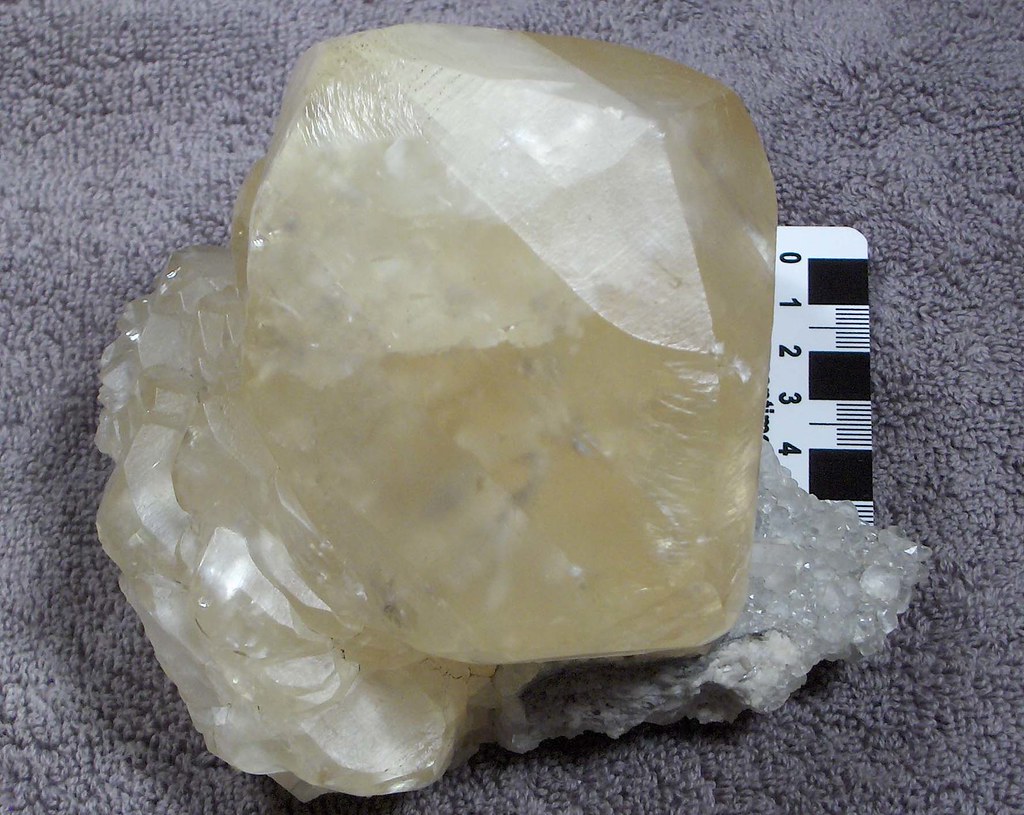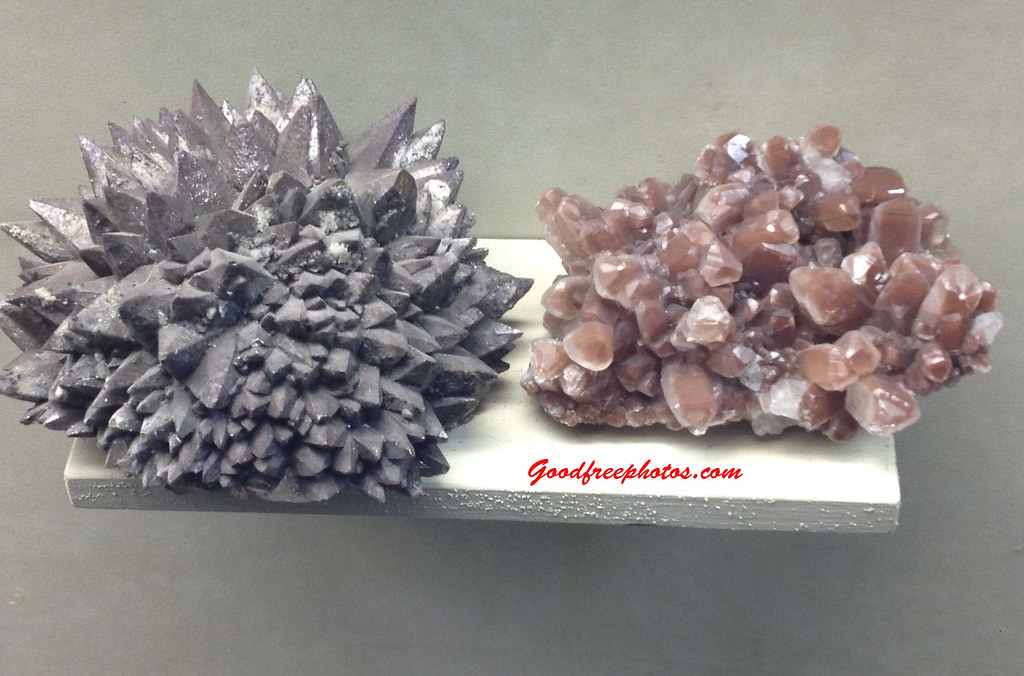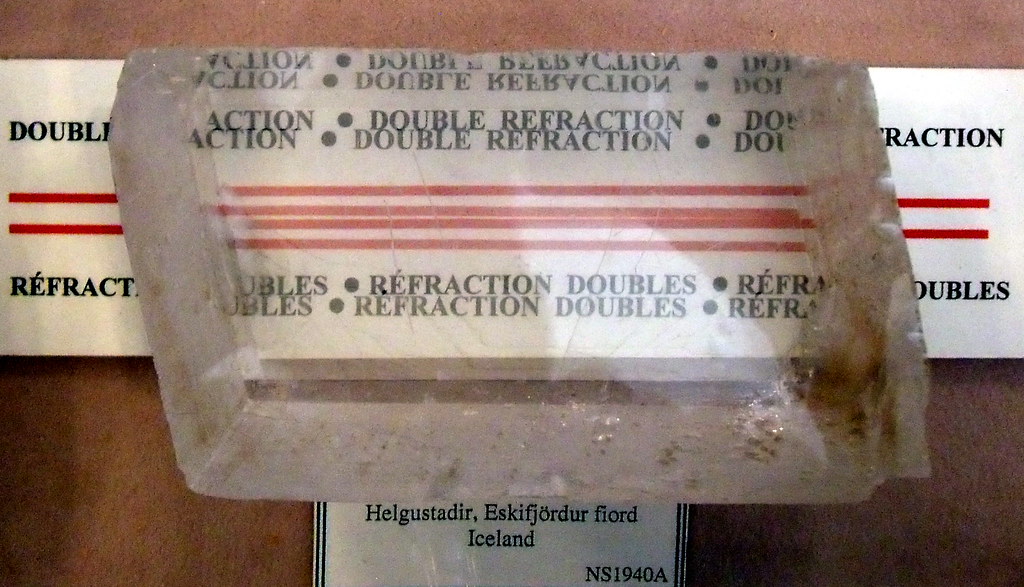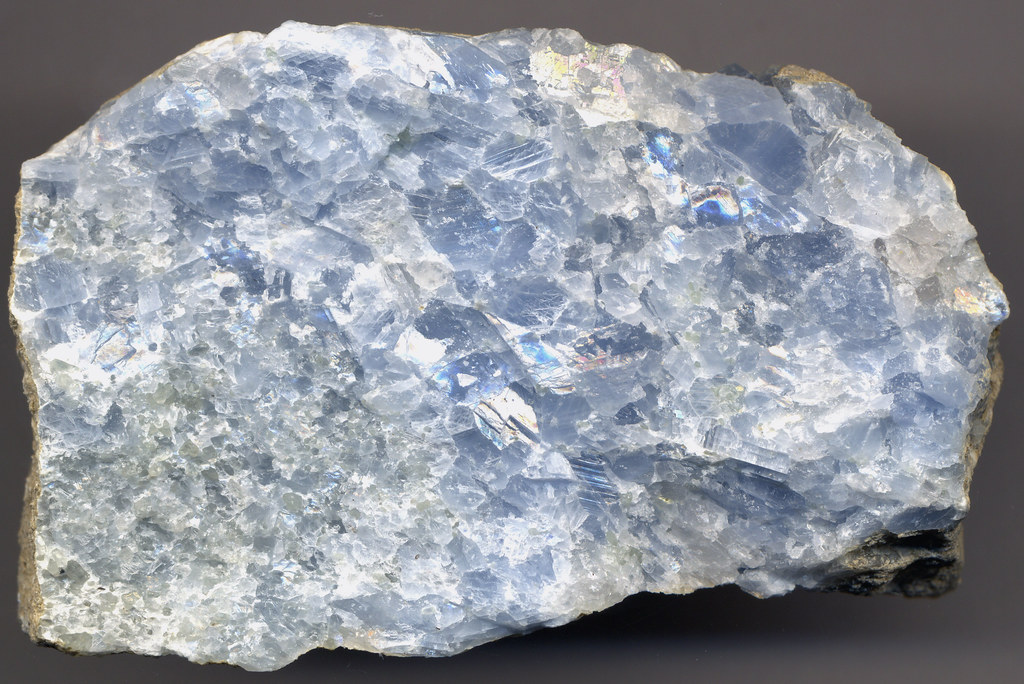Calcite is a carbonate mineral, one of the most abundant on the Earth’s surface. It is the main component of chalk, limestone, stalactites, and stalagmites.

Image source: https://search.creativecommons.org/photos/10030125-eff4-4643-9bce-98ee6a895987 by subarcticmike
What is calcite?
The name calcite is derived from the Greek word chalix, meaning “lime“. This mineral is a common constituent of sedimentary rocks and it is present in lots of hot springs. It is the main component of stalactites and stalagmites. Moreover, calcite is the primary constituent of the shell of marine organisms.

Image source: https://search.creativecommons.org/photos/2fda9ac6-1be3-4ffc-8962-3cd6aaa94e1e by Archbob
It is present in various geological settings, in particular, Italy is a great source of calcite. It has different colors: pink and green calcites are found around Germany, Cumberland, England, and the United States. Golden yellow and amber varieties of calcite occur in Joplin, Missouri, and Pitcher, Oklahoma, but it also presents in Romania, Namibia, and Mexico.

Image source: https://search.creativecommons.org/photos/83e375c5-79c3-4823-bfb0-ff69988c1a25 by Rizla+
How is calcite formed?
The lime cycle is the process by which calcite is changed to quicklime, then to the slaked line by hydration, and finally turns in calcium carbonate by carbonation. The conditions present during each phase have a huge influence on the final product.
For instance, when slaked lime is mixed into a thick slurry with sand and water to form mortar for building purposes, the slaked lime in the mortar slowly starts to react with carbon dioxide to turn on calcium carbonate. So according to the reaction: Ca(OH)2 + CO2 → CaCO3 + H2O; the carbon dioxide present in this reaction is principally available in the air or dissolved in rainwater.

Image source: http://bridgettconservation.co.uk/hot-lime-building-restoration-and-conservation/
What are its characteristics?
Pure calcite is colorless or white, the different shades of color are given by the presence of impurities. It can be transparent or opaque.
Calcite is softer than the stone, porcelain, and plastic surfaces found in kitchens and bathrooms but more lasting than dried food.
One of its well-known properties is birefringence or double refraction because when light passes through, it is divided into two rays that travel at different speeds and in different directions. This way objects appear doubled.
First produced in the 17th century from the east coast of Iceland, has been used for optical instruments. Later, Polaroid sunglasses will use this same property to cut down glare on a sunny day.

Image source: https://search.creativecommons.org/photos/b8864252-8680-402c-bd9a-df669f3b169e by subarcticmike
Calcite types
Calcite has two naturally occurring polymorphs: aragonite and vaterite.
Aragonite changes to calcite at 470°C, while Vaterite, if exposed to water, turns in calcite (at low temperature) or aragonite (at about 60°C). Crystals of calcite may be hexagonal-rhombohedral, but also tabular forms, prisms, and various scalenohedrons.
Moreover may occur in fibrous, granular, lamellar, and compact forms.
The size of the calcite crystals depends on the level of metamorphism. For instance, marble that has been subjected to higher levels of metamorphism will generally have larger calcite crystals.

Image source: https://search.creativecommons.org/photos/00bbc73f-2468-47c1-aa07-b1492983d482 by James St. John

Image source: https://search.creativecommons.org/photos/f3b6f7cb-ca3f-4c8a-b5ce-695ddc8b7518 by James St. John
How was it used throughout history?
The earliest use of lime as a construction material was approximately 4000 BC in Egypt to build pyramids. It is also well documented, that the Roman Empire used lime-based mortars widely. Vitruvius, an important Roman architect, made guidelines for lime mortar mixes. Examples of applications included cisterns, fish ponds, and aqueducts.
James Parker made a product called Roman cement or natural cement in 1796. It was produced by burning a mixture of limestone and clay together in kilns similar to those used for lime. The ending product had better strength and was used in construction.
Afterward, Joseph Aspdin an English mason/builder patented the Portland Cement in 1824. It consisted of a blend of limestone, clay, and other minerals which were calcined into fine particles. Its consistency and higher strength levels allowed it to replace natural cement in mortars. However, Portland cement had poor workability, but if it was combined with lime provided an excellent balance between strength and workability.
Lime products have played a significant role in the construction for thousands of years and excellent performances such as the Great Wall of China, which have lasted for hundreds of years. For this reason, it is still used today in modern masonry construction.

Image source: https://search.creativecommons.org/photos/5a25ef02-9f42-4a11-b01c-3d5161dc188a by Reading Tom
Where can find calcite today?
The construction industry is the primary consumer of calcite in the form of limestone and marble. Marble is an easily worked rock that has long been used for monuments and sculptures. Its lack of significant porosity allows it to resist well to freeze-thaw action outdoors.
Calcite has also lots of uses as a neutralizer of acids. For hundreds of years, it was used as an acid-neutralizing soil treatment.
In Medicine, calcite is mixed with sugar to create calcium carbonate that therefore it is made into chewable tablets used in the neutralization of stomach acids and to treat digestive and other ailments.
Finally, Limestone is often treated and used as sorbent material during the burning of fossil fuels because Calcium carbonate reacts with gases in the combustion emissions, absorbs them, and prevents them from escaping to the atmosphere.

Image source: https://search.creativecommons.org/photos/65e2a5bb-1784-481a-9e10-bdea969fadf8 by Ken Lund

Image source: https://search.creativecommons.org/photos/acce56c5-823f-43ce-ad83-7271a0585b35 by James St. John
Info sources:
http://geology.com/minerals/calcite.shtml
http://www.jewelsforme.com/gem_and_jewelry_library/calcite
http://www.newworldencyclopedia.org/entry/Calcite
http://www.minervaconservation.com/articles/abriefhistoryoflime.html

Comments are closed.